10 comparables and benchmarks to help determine what Quinn Hughes’ next contract will look like
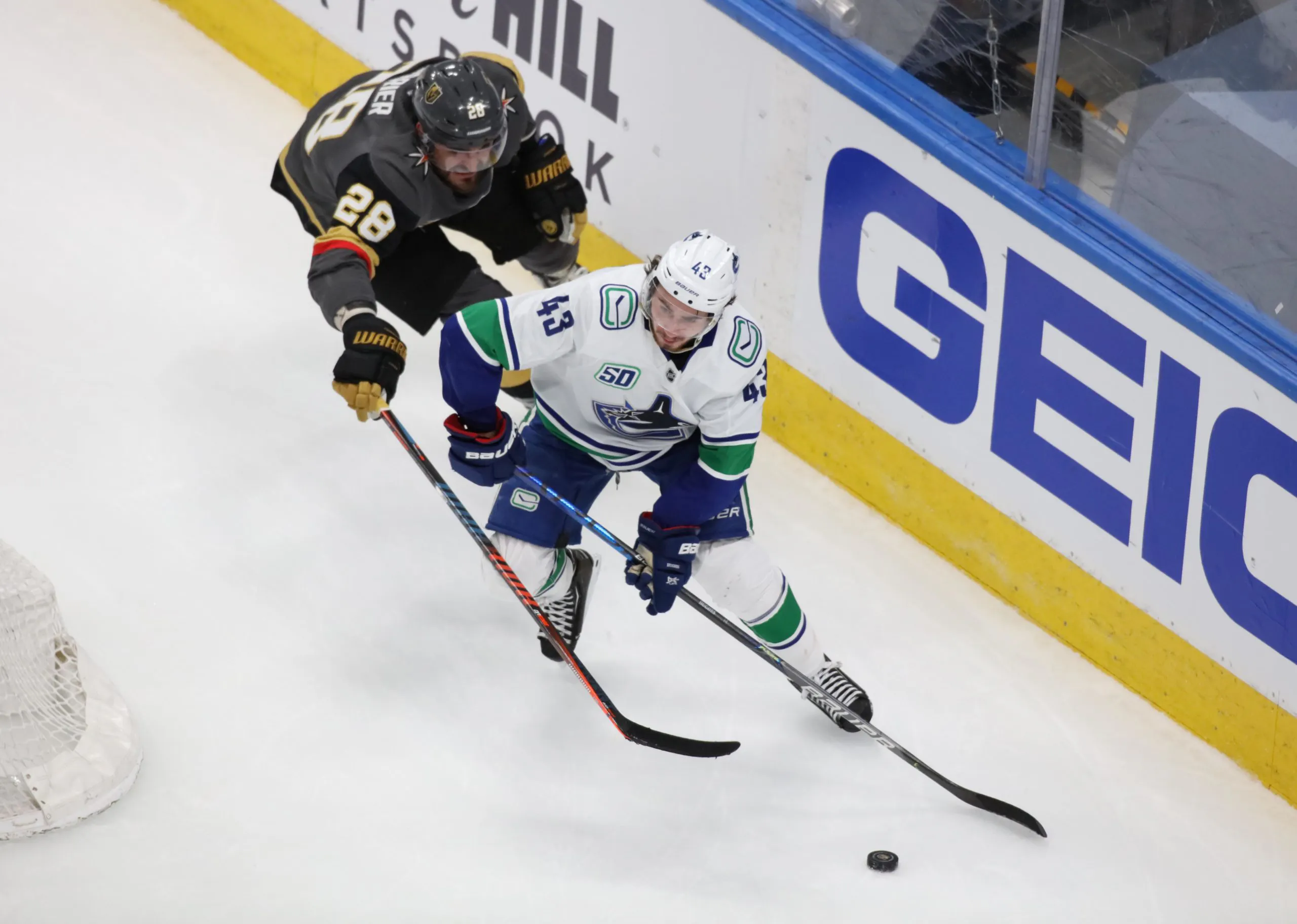
Quinn Hughes has made a remarkable impact on the Vancouver Canucks as he’s completely revitalized a blueline that had been struggling for a number of years. His skill set is so unique that you can make the case that he’s already the most talented defenceman in Canucks history. That talent and importance to the team create a challenge for Canucks’ management though, as now they have to figure out the details of his second contract.
I want to start by saying there isn’t really a direct comparable for Hughes. His skill set is very unique for a defenceman, and most of the other young defencemen making a similar impact around the NHL are still on their ELC’s.
That being said, there are other defencemen around the league that have been undisputed number one defencemen on their teams by the team their ELC is up, so those are the players I’m going to key in on. A lot of variables go into any contract signed around the league including a team’s position in the standings, other players on the team, and obviously their stats to that point in their career.
The other wrinkle in the Hughes situation compared to Elias Pettersson’s next contract is that Hughes will not be eligible for an offer sheet due to playing those few games at the end of the 2018-19 season and burning a year of his ELC – which may make negotiations drag on a little longer while also giving the Canucks more of the power at the bargaining table.
I will be using the same requirements when seeking comparables as I did with Pettersson:
- The player must have been drafted in any draft from 2008 onwards, this way their second contract came in the last decade.
- The player must have been selected within the top 20 picks in their draft year (Expanded from the top 10 rule I had with Pettersson). This rule is a little more arbitrary, but the thought behind it is that a player selected within that range is expected to make an impact during their entry-level contract.
- The player must have produced at a high level throughout at least two of their three ELC seasons, as Hughes has.
- The comparable player must play the same position as the player they are being compared to. Hughes will only be compared to defencemen.
- I will only be looking at their second contracts. Some players may have signed extremely team-friendly deals, others may have gotten over-paid. All of that will balance out.
- I will only be referencing stats from their ELC’s, and directly referencing the year prior to when the comparable player signed their deal when looking at advanced stats.
Quinn Hughes
The issue when looking for contract comparables for Hughes is that he’s part of a new age where defencemen can come into the NHL and immediately make an impact while on their ELC, which theoretically would make their second contract larger than if they had taken a few years to show their potential. Again though, there are other defencemen that have cemented themselves as number one d-men on their team while on their ELC in the past decade.
Let’s take a look at Hughes’ stats before moving on to the comparables I want to highlight.
 As opposed to Pettersson, who has two full seasons under his belt, Hughes only has one to reference. That makes it a bit more complicated as odds are Hughes’ camp will want to wait another season before negotiating, but regardless it’s hard to ignore his point totals through one season. On top of that, nothing from his rookie season seemed to point toward unsustainability.
As opposed to Pettersson, who has two full seasons under his belt, Hughes only has one to reference. That makes it a bit more complicated as odds are Hughes’ camp will want to wait another season before negotiating, but regardless it’s hard to ignore his point totals through one season. On top of that, nothing from his rookie season seemed to point toward unsustainability.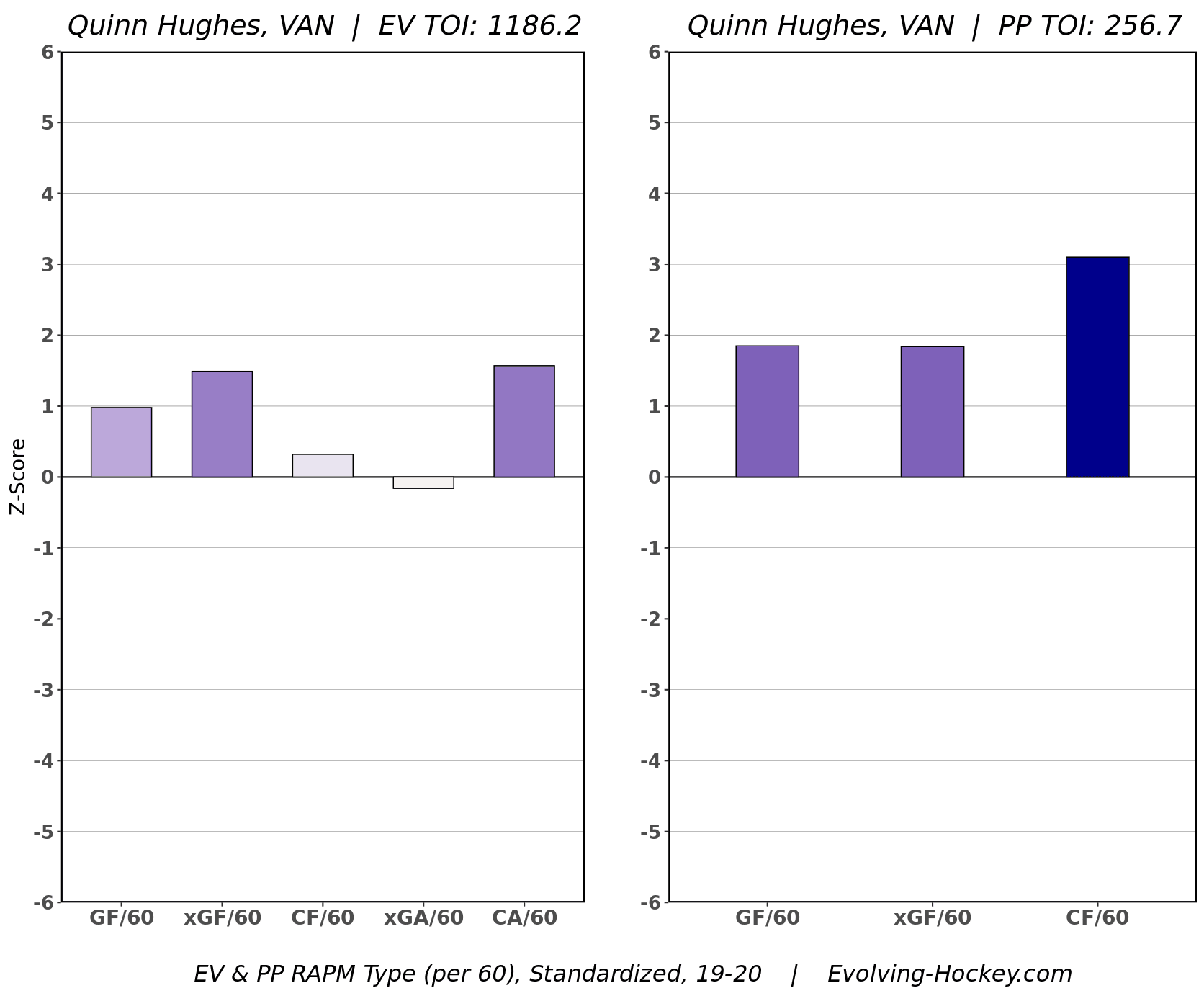
Hughes’ even-strength impact was impressive from a rookie, especially him being able to hold his own in the defensive end. His advanced metrics show that he was positive in almost every part of the game, though he did give up a fair amount of high danger chances. Hughes’ power-play impact was huge though, which is something the eye test could tell you as well.
Now let’s take a look at some players that may be referenced by either the Canucks or Hughes’ camp as the two sides get set to negotiate in the next year.
Cale Makar/Miro Heiskanen/Rasmus Dahlin
All three of these players are making immediate impacts on their teams at a similar level to Hughes at this point. The issue is all of these players are on their ELCs as well. Whenever one of the players from this group does get signed, however, it will definitely set a precedent for the other three, as all four are leading the new age of defencemen joining the NHL.
The bigger question when I look at this group is who will sign first? All of them are heading into the final year of their ELCs, and each team (aside from maybe Buffalo) is in a position where they should be in the playoffs yearly.
I’m not sure if it would benefit the player or team more to be the first of the four to sign, but I would expect the entire group to account for a similar percentage of their team’s cap. If one of these players sign for a huge discount, or huge overpay, expect that to influence negotiations for the rest.
Zach Werenski – 8th overall, 2015
Werenski has been a big part of the Blue Jackets for the past few seasons, quarterbacking their power play while also handling a large number of minutes at even strength. Negotiations with Werenski dragged into September last summer for Columbus, and a similar situation could be ahead for Hughes and the Canucks.
Werenski signed a 3-year extension with an AAV of $5 million – a contract that will expire in 2022. Definitely a bridge deal, but it will be the only bridge deal on this list. I’m not a huge fan of this comparison but I thought I’d include it since it went to an offensively minded defenceman recently.
His point totals were solid through his entry-level deal as he put up over 40 points in two of the three seasons.

Looking at advanced metrics from the 2018-19 season for Werenski, Hughes gets the edge defensively while also being able to create more chances at even strength and on the power-play. Chris Tanev may have been a factor in Hughes’ defensive metrics, but we’ll have to see if he can sustain that this upcoming season.
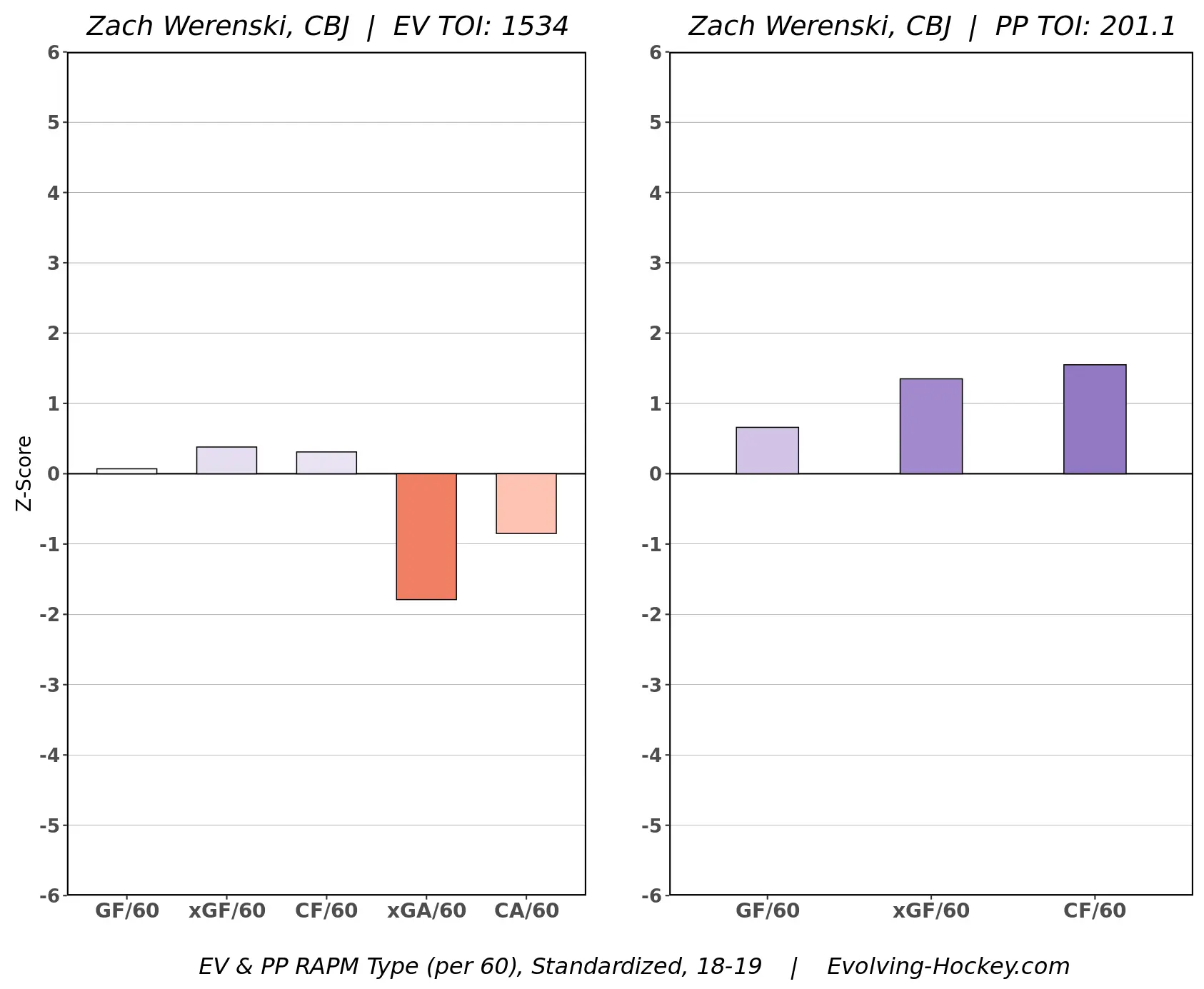
Werenski’s percent of cap when signing his contract: 6.14%
Today’s equivalent with an $81.5 million cap: 3 years at $5 million
Thomas Chabot – 18th overall, 2015
Chabot will be the latest draft pick I compare to as he almost found himself sliding out of the top 20 in 2015. Similar to Werenski, Chabot signed his deal in September of 2019. The difference is Chabot had a year remaining on his ELC (which finished last season), so it’d be similar to if Hughes signed a deal before the 2021 season got underway, though as you’ll see, Chabot had more of a sample size to look at.
Chabot signed an 8-year extension with an AAV of $8 million, a contract that will expire in 2028.
Chabot’s point totals in his rookie season weren’t at the level of Hughes, though they were still good for a rookie on a bad team. Chabot’s sophomore season (the one before he signed his extension) is where he took a bigger step.
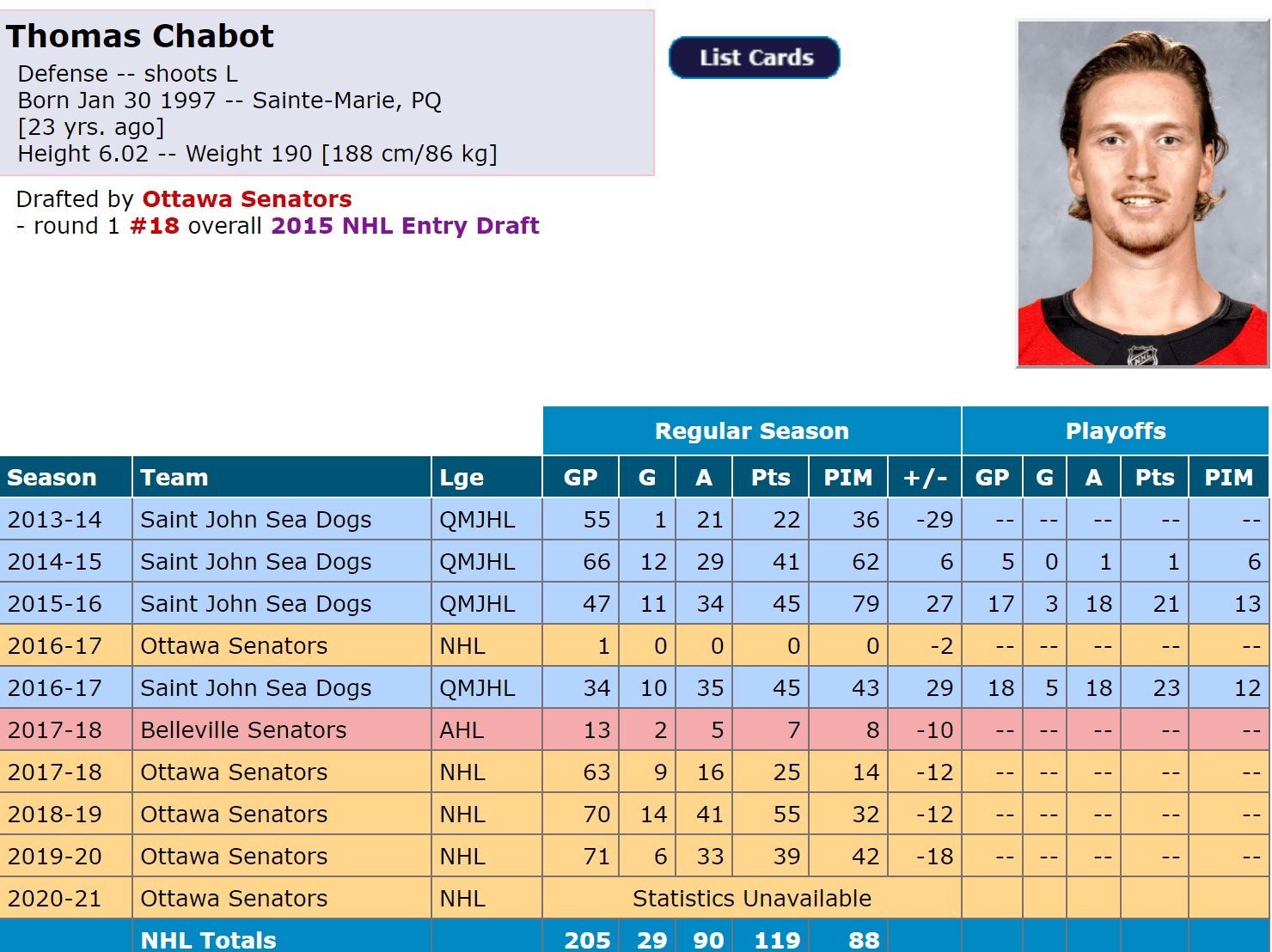
Looking at the advanced metrics, Chabot’s offensive impact was very impressive in 2018-19, even better than Hughes this past season. On top of that, Chabot was able to chip in on the power play, though not to the level of Hughes. However, Hughes does have the edge in the defensive end, which again is something we’ll have to keep an eye on throughout the upcoming season.
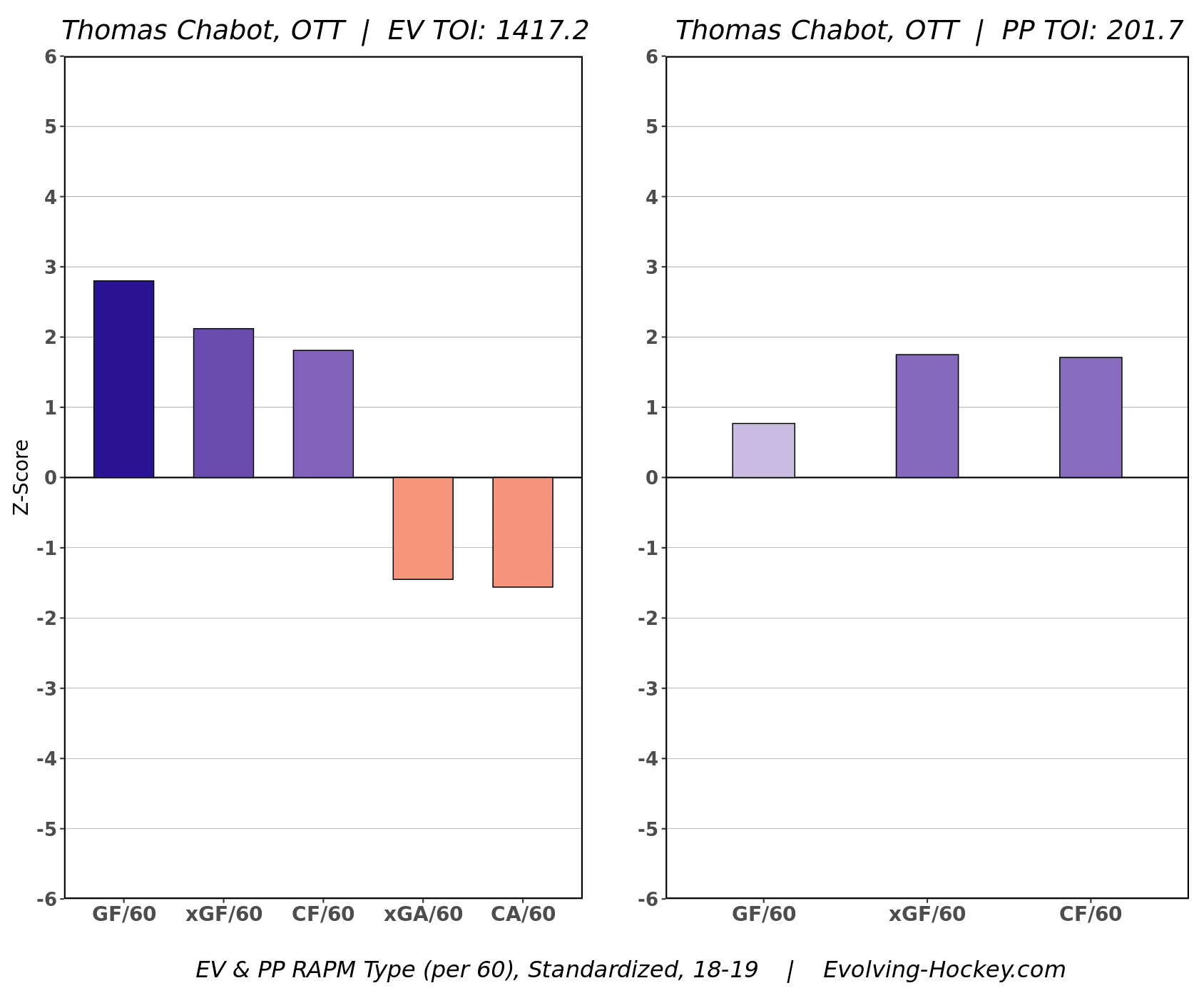
Chabot’s percent of cap when signing his contract: 9.82%
Today’s equivalent with an $81.5 million cap: 8 years at $8 million
Aaron Ekblad – 1st overall, 2014
We’ve hit the lone 1st overall defenceman on this list, mainly because the only d-men to go first overall in the last ten years are him and Dahlin (though I’ve made the argument that Hughes should’ve gone first overall in 2018, you should read that too). Ekblad has been a good all-around defenceman, but hasn’t been as impactful as I’m sure the Panthers hoped he would be when they drafted him.
Ekblad signed an 8-year extension with an AAV of $7.5 million back in 2016, a contract that will expire in 2025.
Ekblad’s point totals were alright through his first two seasons, though not like Hughes’ rookie campaign.
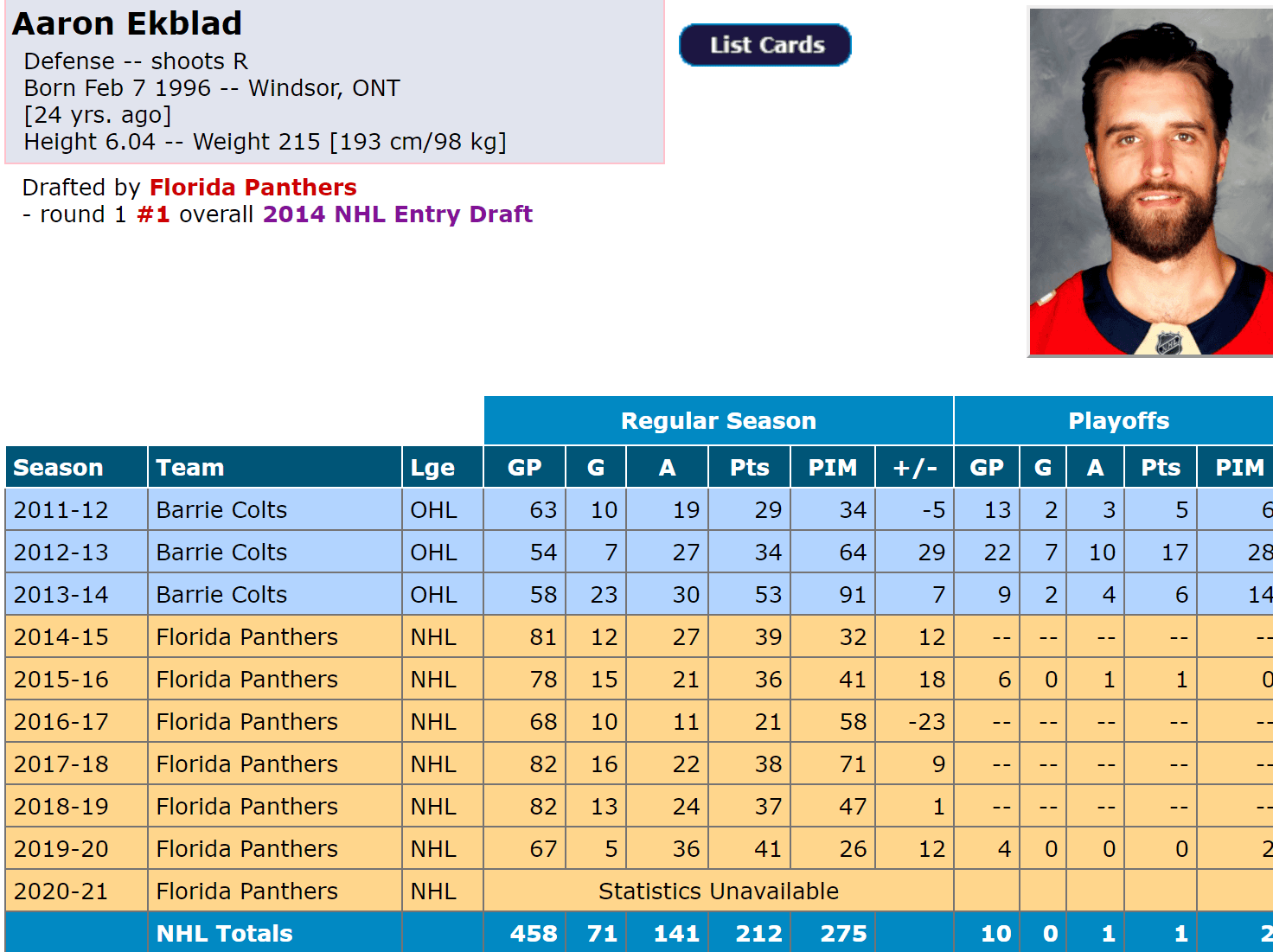
Ekblad’s advanced stats had room for improvement on the offensive side in 2015-16 before he signed his extension, with Hughes not only creating more chances but also converting more frequently. The edge goes to Ekblad in his own end though, where he was able to limit both high danger chances and general chances more effective than Hughes. Despite the differing numbers I really like this comparison as both are about equally important to their team, with Ekblad being a bit more well-rounded.
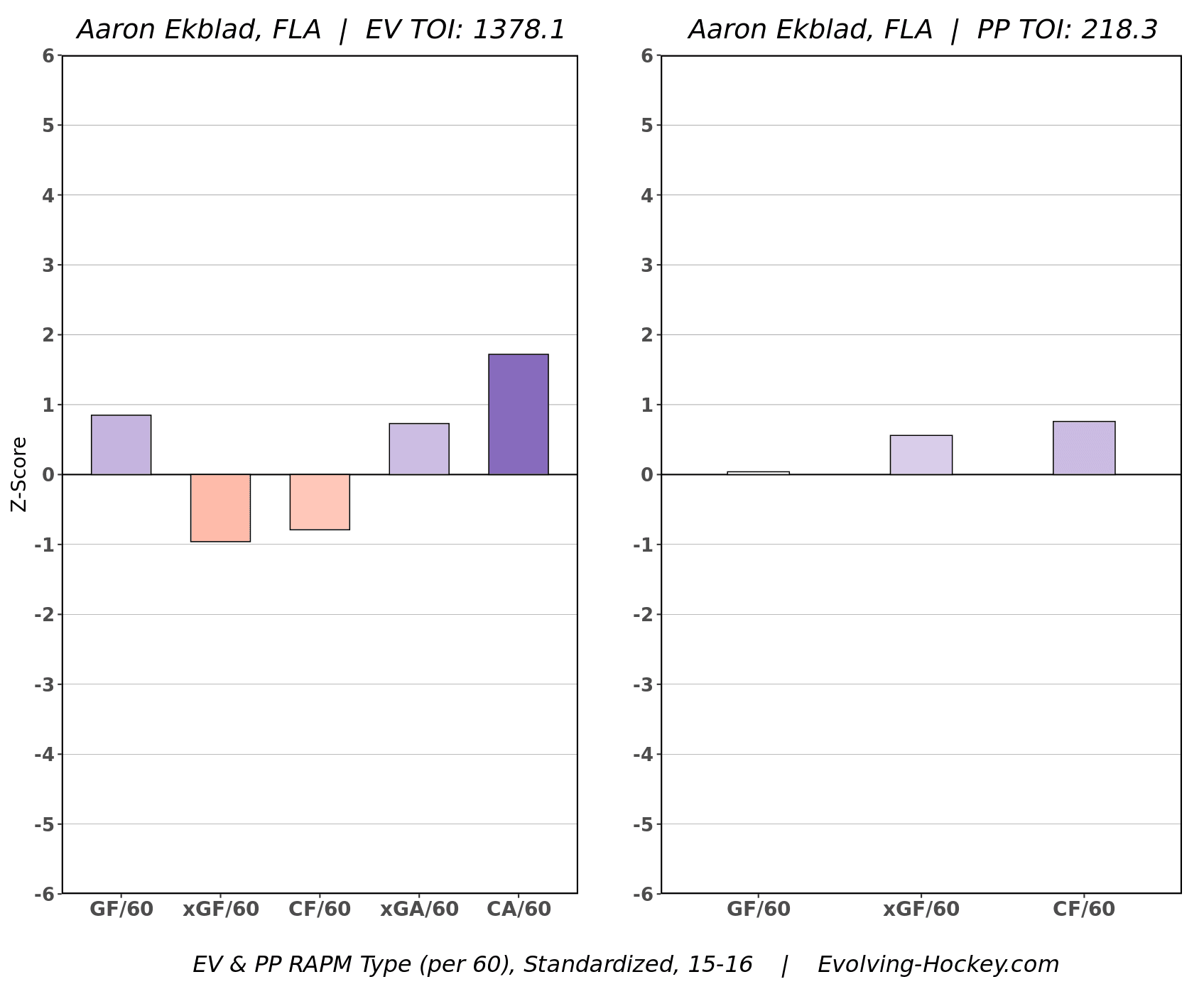
Ekblad’s percent of cap when signing his contract: 10.27%
Today’s equivalent with an $81.5 million cap: 8 years at $8.37 million
Seth Jones – 4th overall, 2014
This one is a bit tough to compare to as Jones was drafted by the Predators, who at the time had one of the best defensive cores in the NHL. As a result, Jones hasn’t really shown his potential until the past few seasons. The reason I’m using it is because Jones was still a 4th overall pick, and despite being stuck on the Predators for 2.5 seasons it was the Blue Jackets who ended up signing the contract.
Jones signed a 6-year extension with an AAV of $5.4 million in June of 2016, a contract that will expire in 2022.
As I said, Jones wasn’t put in the best spot to produce during his ELC, which made his point totals a bit disappointing.
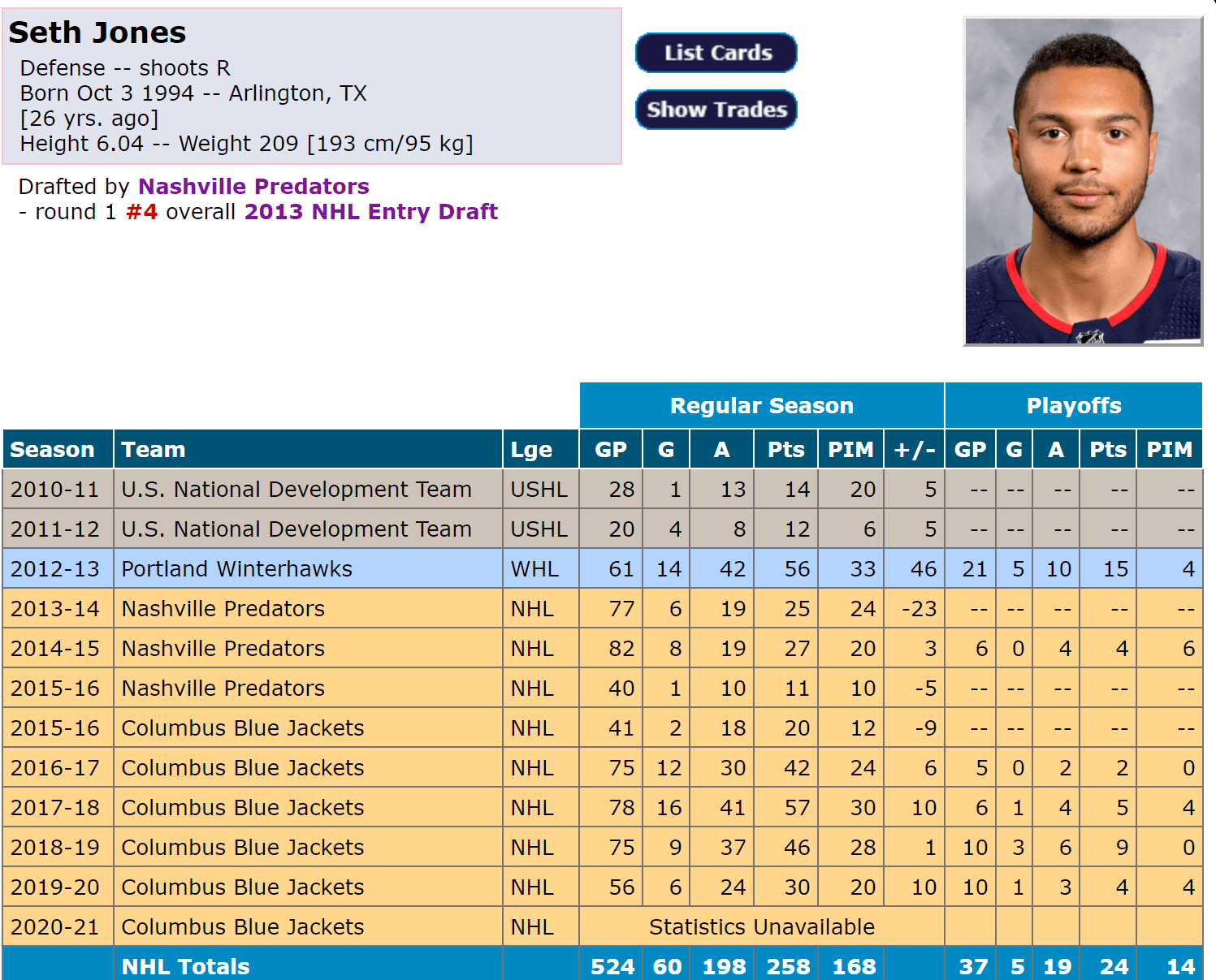
Jones split time between Nashville and Columbus in 2015-16, which may contribute to his sub-par advanced metrics the season prior to signing his contract. This probably isn’t the best comparison for Hughes, as Jones wasn’t really able to make the same impact as Hughes on their respective ELC’s.
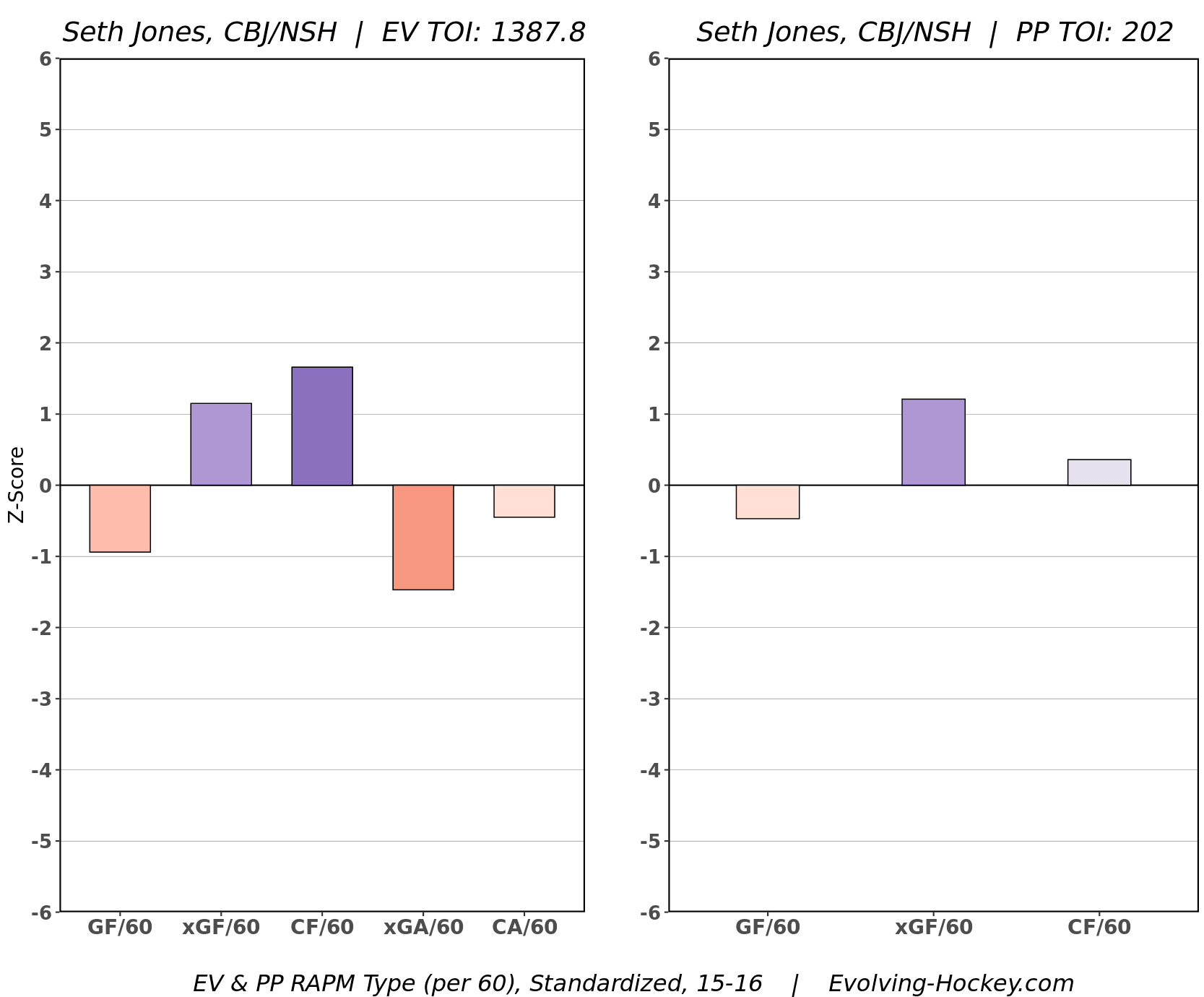
Jones’ percent of cap when signing his contract – 7.40%
Today’s equivalent with an $81.5 million cap – 6 years at $6.03 million
Morgan Reilly – 5th overall, 2012
Rielly is an example of a player that wasn’t put in a position to succeed as much as Hughes was in his rookie season. That’s a big part of why the best comparable for Hughes will be Makar/Dahlin/Heiskanen – because they’ve all been given the opportunity to thrive early in their careers.
Rielly signed a 6-year extension with an AAV of $5 million in April of 2016.
His production through his ELC was alright, but it wasn’t at the level of Hughes.
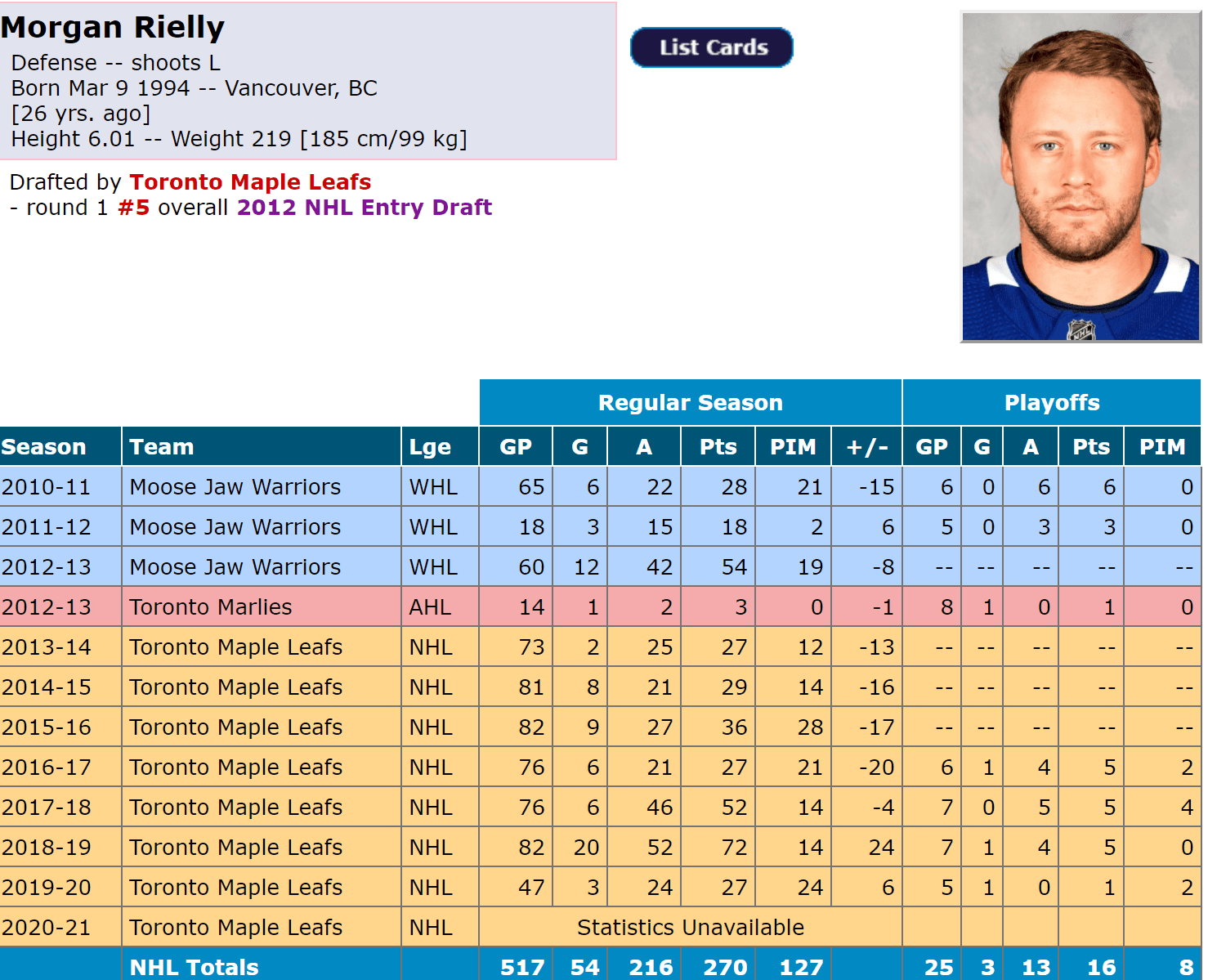
Rielly’s advanced metrics were good offensively, though the Maple Leafs weren’t able to find the net that frequently in 2015-16, which is more of a reflection on the talent on that team at the time. Rielly also didn’t play on the power play as much as Hughes did in his rookie season.

Rielly’s percent of cap when signing his contract: 7.00%
Today’s equivalent with an $81.5 million cap: 6 years at $5.71 million
Dougie Hamilton – 9th overall, 2011
Hamilton was drafted by the Bruins, but ended up being extended by the Flames after a trade to Calgary. Hamilton also didn’t play in the NHL until his draft plus 1.5 season, which gives him a bit of an edge development wise over Hughes.
Hamilton signed a 6-year extension with an AAV of $5.75 million in June of 2015.
Hamilton put up solid numbers throughout his ELC, but it was his third season (the one prior to signing his extension) where he really hit his stride.

Hamilton’s advanced metrics in 2014-15 were actually very similar to Hughes’ this past season, though Hamilton was playing on a high-powered Bruins team. Hamilton may have actually had the edge over Hughes on the offensive side at even strength, though Hughes was better on the power play. Both had the same issue of giving up high danger chances but limiting general chances defensively.
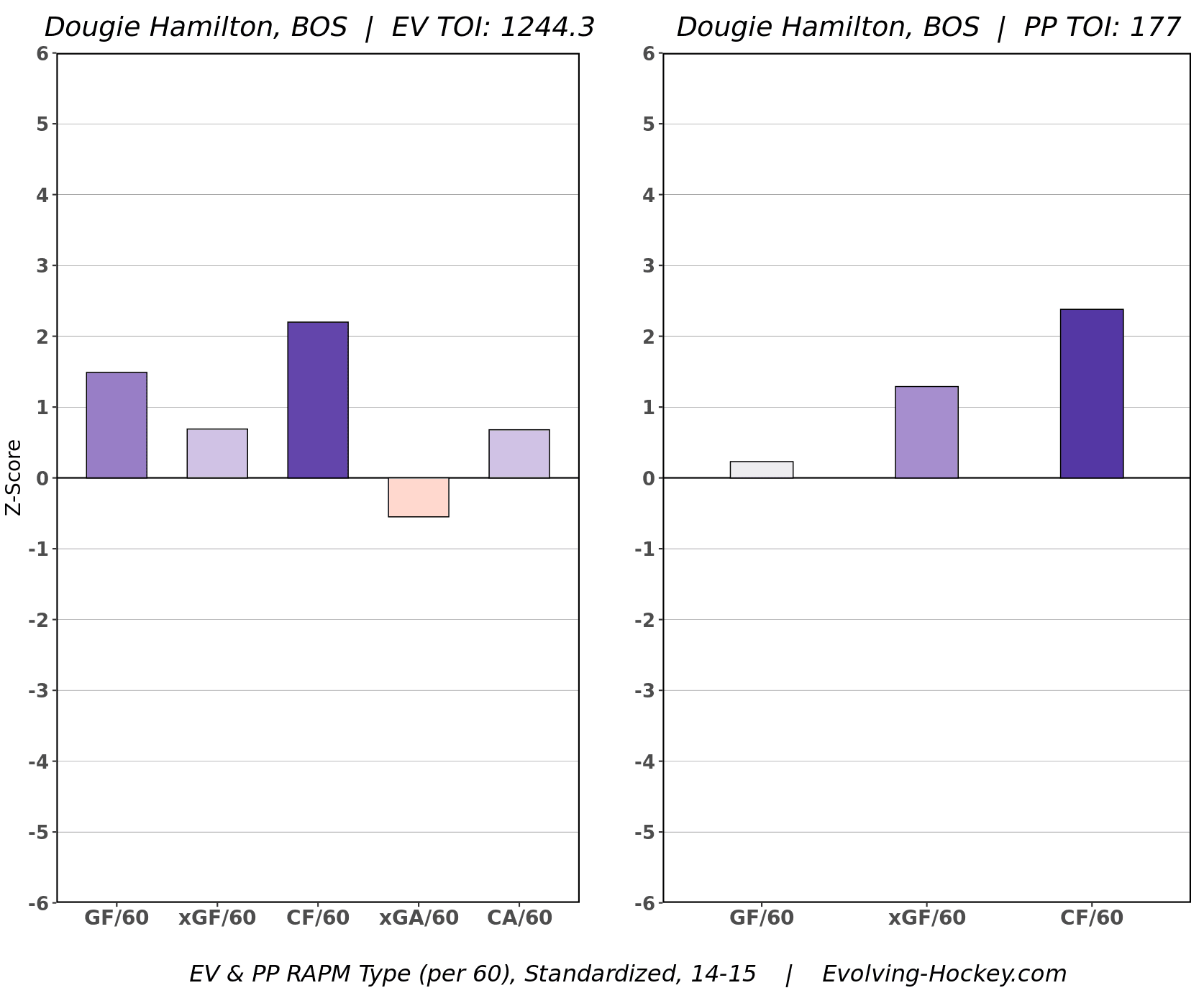
Hamilton’s percent of cap when signing his contract: 8.05%
Today’s equivalent with an $81.5 million cap: 6 years at $6.56 million
Oliver Ekman-Larsson – 6th overall, 2009
Everyone’s favourite almost-Canuck! I think almost everyone is familiar with his current contract at this point, which is probably a bit too much for what he brings to a team. But, I’m only looking at his second contract, which was definitely a better deal.
OEL signed a 6-year extension with an AAV of $5.5 million in March of 2013.
Ekman-Larsson is another example of a defenceman getting off to a slow start in their NHL career, which has not been the trend for young defencemen lately around the league. OEL also started the year in the AHL the year he signed his extension, which is something that wasn’t ever really a consideration with Hughes.
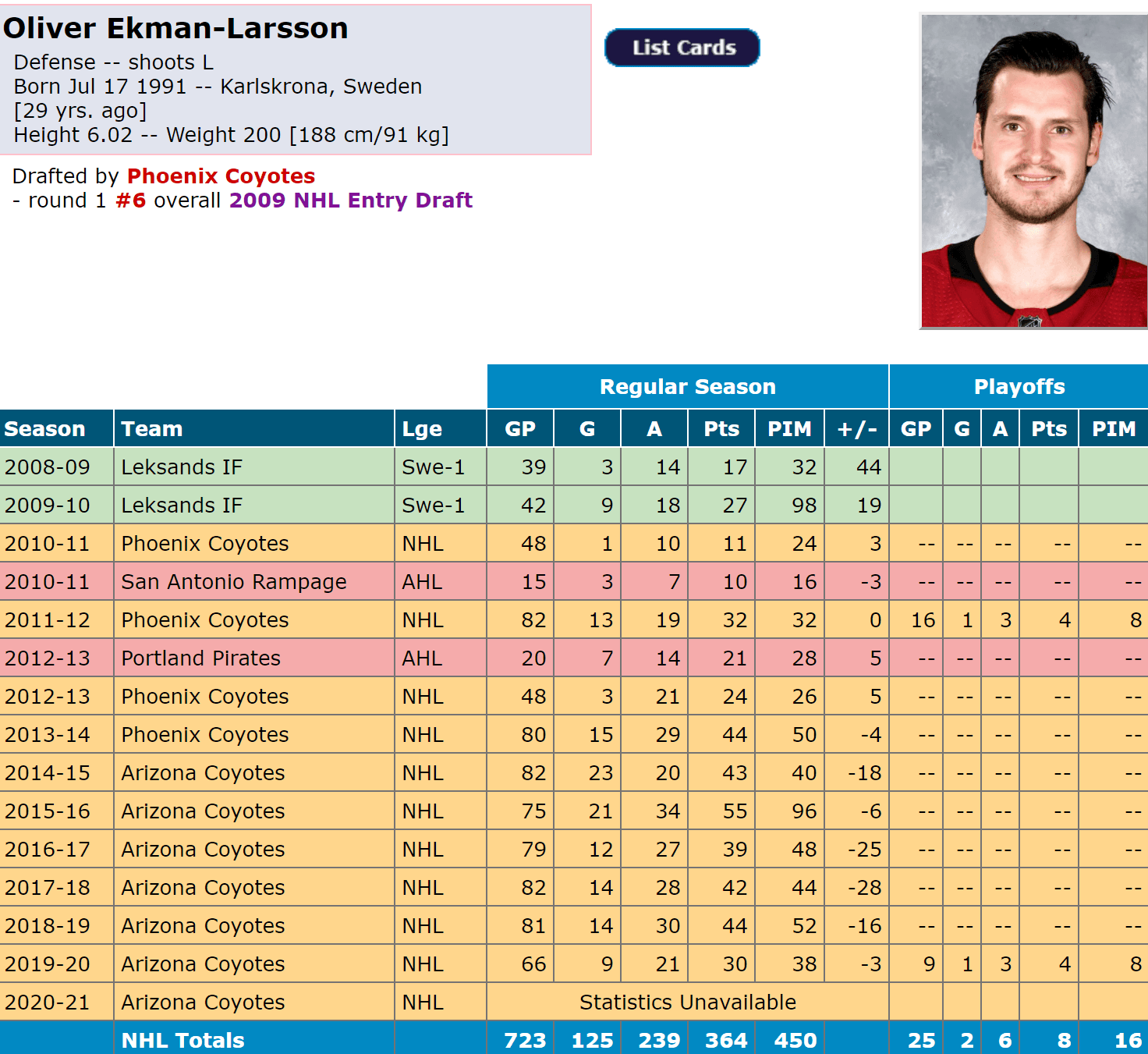
Ekman-Larsson’s time in the NHL that season saw him put up great advanced stats though, producing positively in every aspect of the game. He was also able to create chances on the power play, but not at the level of Hughes.

Ekman-Larsson’s percent of cap when signing his contract: 8.55%
Today’s equivalent with an $81.5 million cap: 6 years at $6.97 million
Drew Doughty – 2nd overall, 2008
Despite the contract being signed almost a decade ago, I feel this is probably the best comparison. Doughty was excellent throughout his ELC, specifically offensively. Doughty was definitely ahead of the game and his first few seasons were more in line with what rookie defencemen are doing in today’s game.
Doughty signed an 8-year extension with an AAV of $7 million ahead of the 2011-12 season.
As I said, Doughty put up good point totals through his ELC.
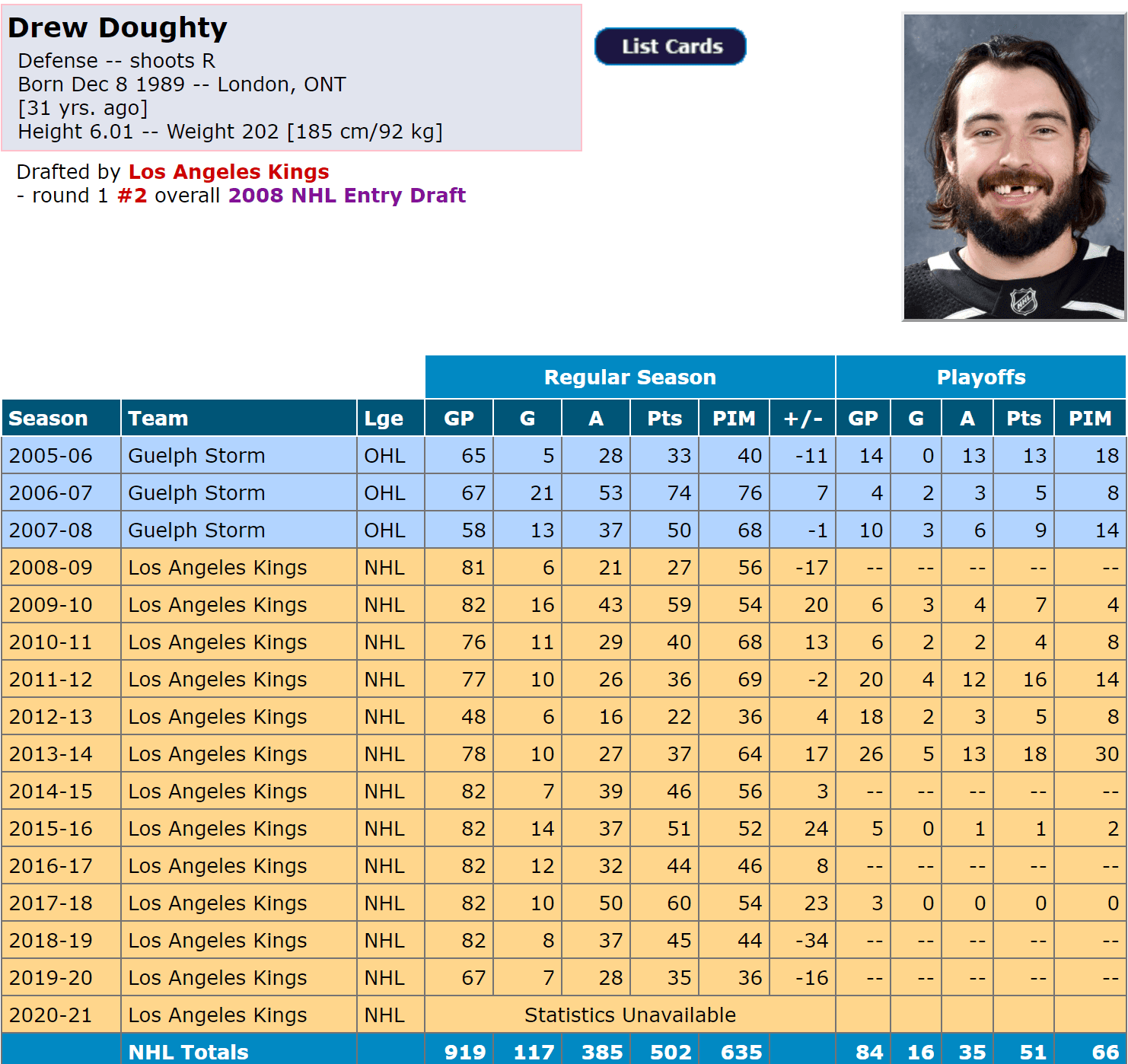
Doughty’s advanced stats were very impressive the year prior to signing his extension, with sizeable positive impacts both offensively and defensively at even strength. You can give the edge to Hughes on the power play, though Doughty was still good with the man advantage.
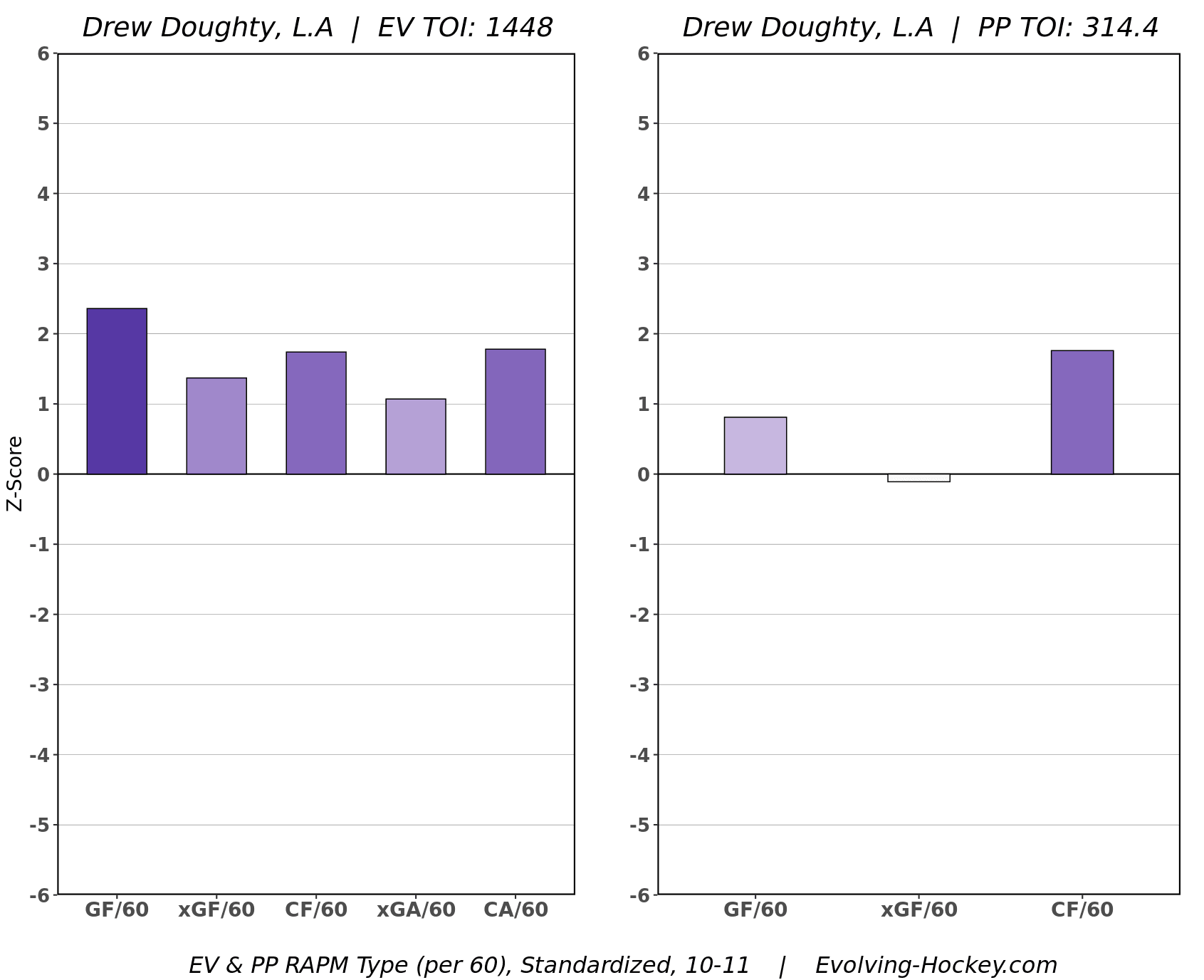
Doughty’s percent of cap when signing his contract: 10.89%
Today’s equivalent with an $81.5 million cap: 8 years at $8.88 million
Alex Pietrangelo – 4th overall, 2008
Similar to Doughty, Pietrangelo was able to contribute very well offensively throughout his ELC, though it did take him a couple of years to reach the NHL, which was more of the norm at the time.
Pietrangelo signed a 7-year extension with an AAV of $6.5 million in September of 2013.
Pietrangelo put up just over .5 points-per-game every season of his ELC, though he did produce a bit less than Hughes was able to last season.
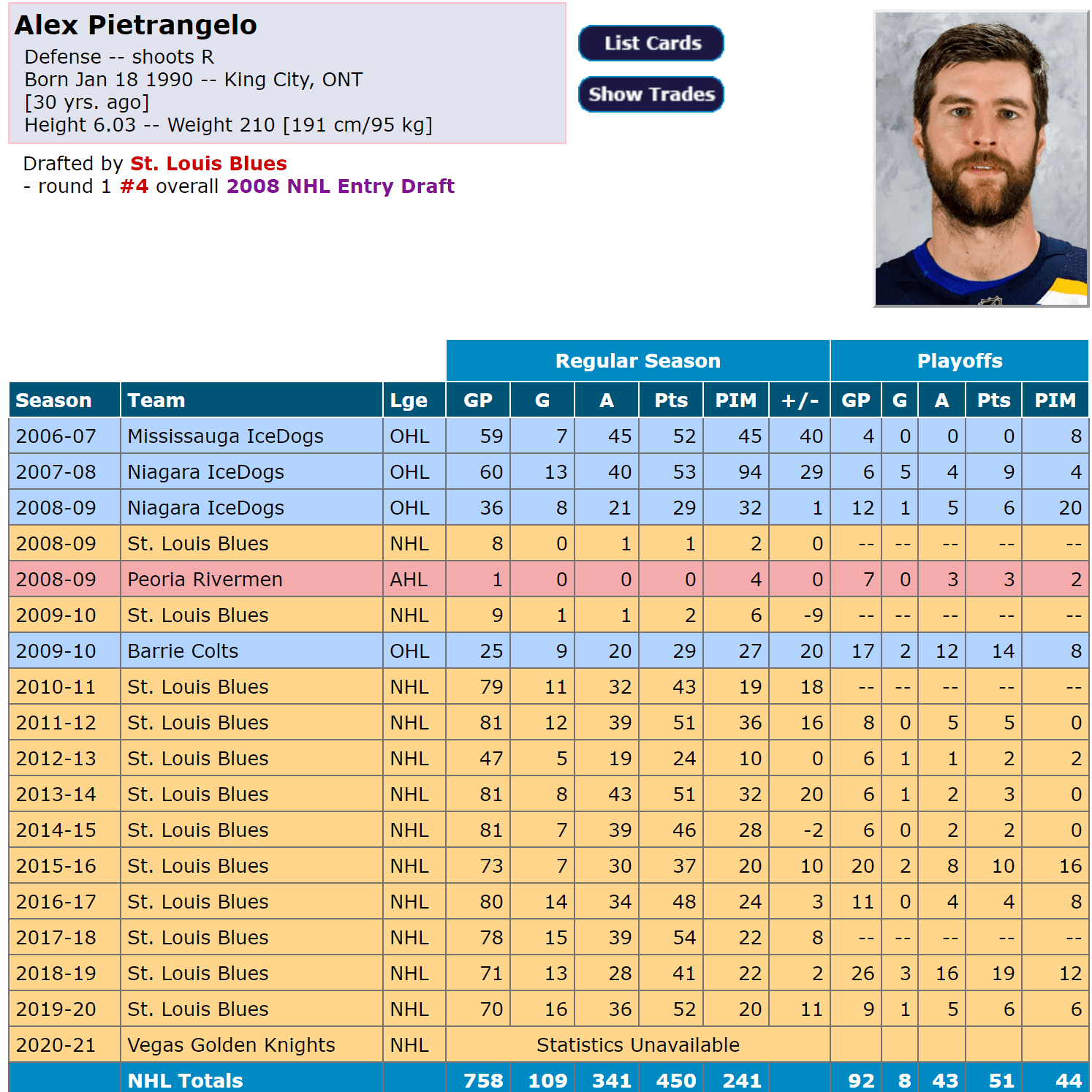
Pietrangelo’s even-strength advanced metrics the year prior to signing his second contract were very similar to this past season for Hughes, though Hughes may have had a bit more success defensively. Hughes also had the edge on the power play, but that’s kind of been the theme throughout.
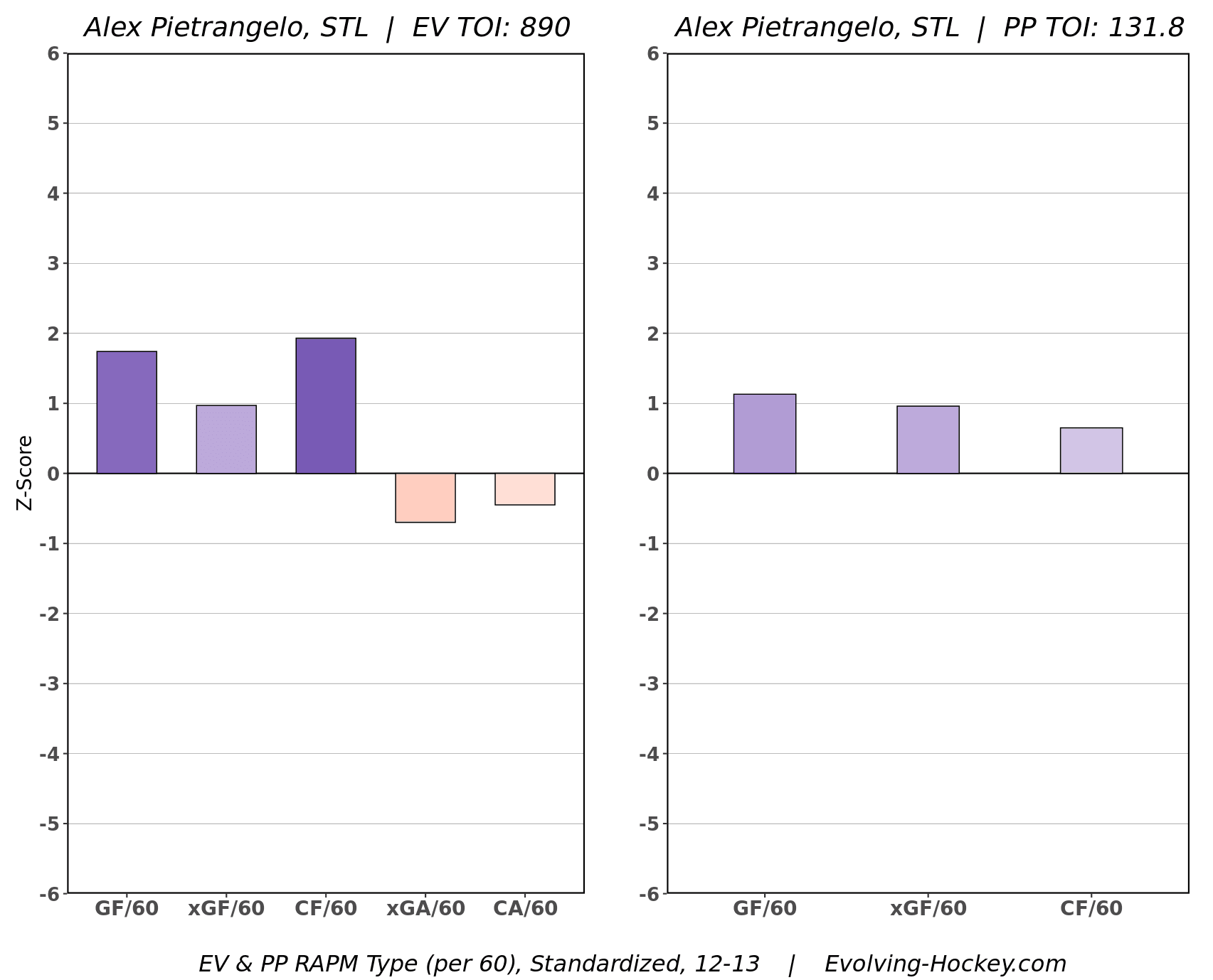
Pietrangelo’s percent of cap when signing his contract: 10.11%
Today’s equivalent with an $81.5 million cap: 7 years at $8.24 million
Erik Karlsson – 15th overall, 2008
As was the theme at the time, it took Karlsson a few years to truly make an impact at the NHL level. That being said, he cashed in after a monster season in 2011-12.
Karlsson signed a 7-year extension with an AAV of $6.5 million in June of 2012.
Karlsson’s point totals through his ELC were excellent, putting up almost a point-per-game in 2011-12 and then immediately cashing in on his second contract with the Senators.
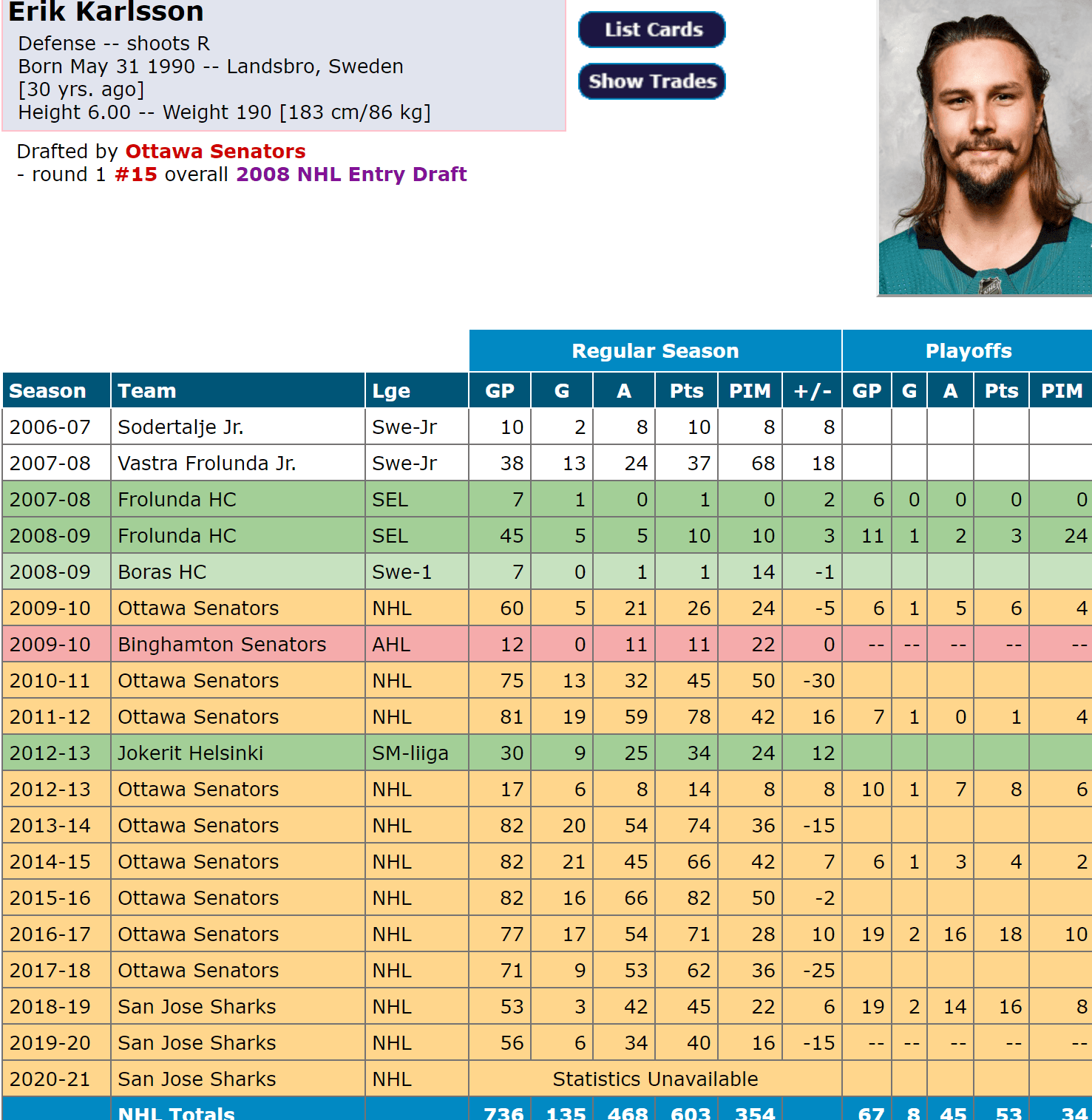
Karlsson’s advanced metrics that season were also crazy, making a huge impact offensively. The only area he struggled in was giving up high danger chances, similar to Hughes. Both Karlsson and Hughes were solid on the power play as well.

Karlsson’s percent of cap when signing his contract: 10.11%
Today’s equivalent with an $81.5 million cap: 7 years at $8.24 million
The Results
So there we have it, ten comparables for Quinn Hughes’ second contract. I’m not going to lie, I’m a little more confident in the comparisons used for Elias Pettersson just because the NHL’s mindset with young defencemen have completely changed in the last few years.
Again, if one of Makar, Dahlin, or Heiskanen had signed by now that would be the primary comparable, but they haven’t so here we are. In a way the three players from the 2008 draft maybe the best to compare to as they all performed throughout their ELC’s
As I did with Pettersson’s comparables I will average out each contract as if it were signed with today’s $81.5 million flat cap, using the percentage of cap from each of the ten players referenced.
Here’s what I expect Hughes to sign at based on those comparables:
7 years at $7.20 Million
This deal takes up 8.83% of the Canucks’ cap as it stays flat at 81.5 million.
I’ll admit $7.2 million may be a bit of a discount, but a couple of factors play into this.
- Hughes is a defenceman, and as I’ve outline throughout this whole article defencemen tend to make less than an elite center.
- The flat cap. We don’t have that great of an idea of when the cap will eventually rise, but every other signing I’ve outlined had the benefit of knowing they may overpay early but as the cap goes up the contract will look better. The Canucks won’t have that benefit. This also creates more of a possibility for a bridge deal for both Hughes and Pettersson.
If Pettersson and Hughes both signed at my predicted price, Hughes would be making $1.88 million less per season than Pettersson, which makes sense. Pettersson will have an extra year of NHL experience under his belt and despite NHL GMs being incredibly reluctant to use it, he is eligible to receive an offer sheet. Hughes will have played two shortened seasons and a few games of experience if he signs next summer, plus will be ineligible for an offer sheet.
There is also the possibility of the Sedin route – where both players consider themselves and each other equally valuable to the team. It’s a bit of a long-shot scenario but I do wonder if they would meet in the middle if they do go down that road. As of now my projections have them taking up a combined 19.97% of the cap at $81.5 million, with the two totalling $16.28 million in AAV. If they split that evenly, the Canucks would be paying each an AAV of $8.14. That’d be a bit of an overpay for Hughes but a definite discount for Pettersson. I don’t think it happens, but fun to think about nonetheless.
Regardless of how much each of the Canucks’ young stars gets paid, it will drastically impact the next decade of Canucks hockey. In the end, it may be better to get it done sooner rather than later, as both Pettersson and Hughes continue to show how invaluable they are to the team’s success.
Recent articles from Josh Elliott-Wolfe




